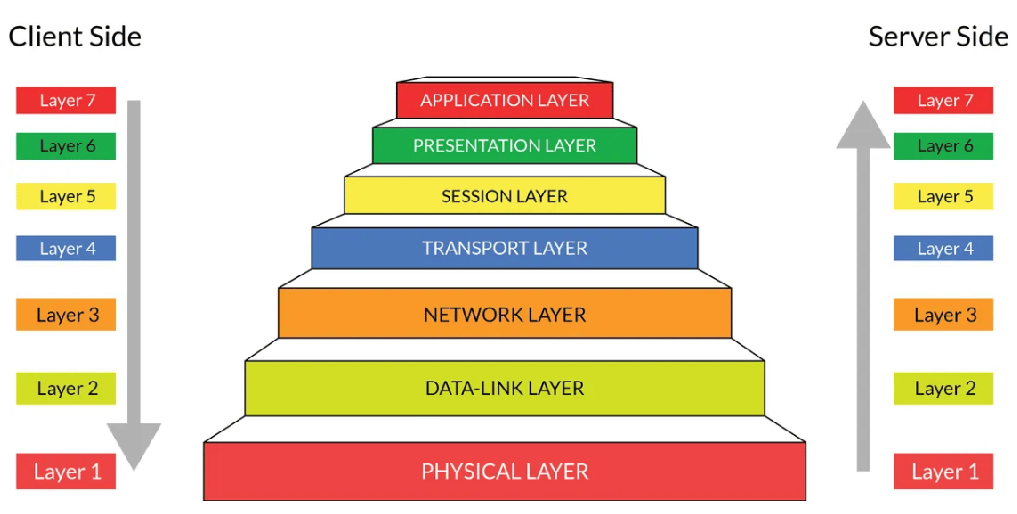Many people use the words router and switch inter-changeably. While the are similar, the reality is, they are different beasts. In this post we will keep this short and sweet, and look at a few key differences that set them apart.
The OSI Model
We first need to consider the 7-layer network architecture model, also called the OSI model. The Open Systems Interconnection (OSI) model is 7 individual layers that computing systems use to communicate. It was the earliest standardized model for network communications, adopted by computer and telecomorganizations in the 80s.
Today’s internet is based off TCP/IP, which is the next generation of OSI. Despite the existence of tcp/ip, the OSI 7-layer model is still widely utilized to visualize how networks operate, and help troubleshoot networking issues.
Let’s take a look at OSI model and how it operates.

The client system will initiate the communication from layer seven, and transit to the server in a downward fashion, until it gets to layer 1. the server receives the Layer 1 (called bits) and begins to “unpack” back to layer 7 to read the data.
How does this relate to routers vs switches?
Easy, Layer 3 is the router, layer 2 is the switch.
Primarily, layer 2 switches are on the same LAN (local area network.)
Layer 3, is the WAN (wide area network) that connects different LANs together.
Just as a network switch connects multiple devices to 1 network, a router connects multiple switches to form a much larger network. It’s as easy as that – They are 2 different levels on the same scale that serve a different function.
Share
JUN
